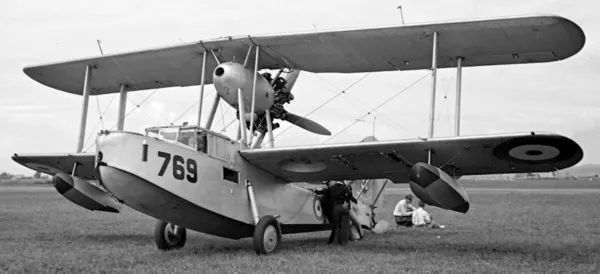Pope, Edward Frank
Killed in Action 1940-01-18


Birth Date: 1920
Born:
Home: Edmonton, Alberta
Enlistment:
Enlistment Date: Unknown
Service
RN FAA
Unit
700 Sqn- Squadron (FAA)
Base
HMS Raven
Rank
Lieutenant (P)
Position
Lieutenant (P)
Service Numbers
Home
 Edmonton, Alberta
Edmonton, Alberta
First Burial
 St Michael Churchyard, Honington, Devon, Uk
St Michael Churchyard, Honington, Devon, Uk
700 Squadron, Fleet Air Arm. Lt(A) Pope (RNFAA)(Can) and Leading Aircraftman J Baxter (RNFAA) were killed while making a forced landing in Walrus I aircraft P 5648 while flying from HMS Raven, RNAS Eastleigh to RN cruiser HMS Norfolk, crashing near Bishop Briggs, 3 miles north of Glasgow, Scotland
Lt(A) Pope had transferred to the Fleet Air Arm from the Royal Air Force
Supermarine Walrus

Supermarine Walrus (Serial No. K8343), coded 769, Vancouver, British Columbia, ca 1940
The Supermarine Walrus (originally known as the Supermarine Seagull V) was a British single-engine amphibious biplane reconnaissance aircraft designed by R. J. Mitchell and manufactured by the British aircraft company Supermarine.
The Walrus made its maiden flight in 1933, the design effort having commenced as a private venture four years earlier. It shared its general configuration with that of the earlier Supermarine Seagull. Having been designed to serve as a fleet spotter for catapult launching from cruisers or battleships, the aircraft was largely employed in other roles, notably as a maritime patrol aircraft and as a rescue aircraft for ditched aircrew. The Walrus featured numerous innovations for the period, being the first British squadron-service aircraft to incorporate in one airframe a fully retractable main undercarriage, completely enclosed crew accommodation and an all-metal fuselage. Early-build aircraft featured the original metal hull design for its greater longevity in tropical conditions, while later-build examples instead used a wooden counterpart to conserve the use of light metal alloys.
The first examples of the Seagull entered service with the Royal Australian Air Force (RAAF) in 1935. The type was subsequently adopted in quantity by the Fleet Air Arm (FAA), Royal Air Force (RAF), Royal New Zealand Navy (RNZN) and Royal New Zealand Air Force (RNZAF). Hundreds of Walruses were in operational service throughout the Second World War, where it was prolifically operated against Axis submarines. It was also adopted by the RAF Search and Rescue Force for recovering downed personnel. The Walrus continued to serve in a limited capacity with several militaries around the world during the postwar era, while some aircraft were also operated in a civil capacity in regions such as Australia and the Antarctic.Wikipedia
Eight were in service with the RAF in Canada. The collection of Intelligence on the U-boat threat off Canada's East coast during the Second World War became an absolute necessity early in the war. Because of sightings and Direction Finding (DF) reports of submarines in the vicinity of Sable Island off the Nova Scotia Coast, a Royal Navy Fleet Air Arm (FAA) detachment with radar-equipped Supermarine Walrus amphibious aircraft was sent to the island in May 1942. The RCAF provided a work party to build the station and later an observer for the aircraft. Under the orders of a controller in Dartmouth, the Walrus flew daily patrols from a small lake on the island whenever the weather permitted, until 20 August when it was lost. The patrol was abandoned for the rest of the 1942 season and the detachment was withdrawn. (W.A.B. Douglas, Creation of a National Airforce, Vol. II, RCAF Official History).Harold A Skaarup Web Page
 Aviation Safety Network
Aviation Safety Network Wikipedia Supermarine Walrus
Wikipedia Supermarine Walrus YouTube Supermarine Walrus in Action
YouTube Supermarine Walrus in Action